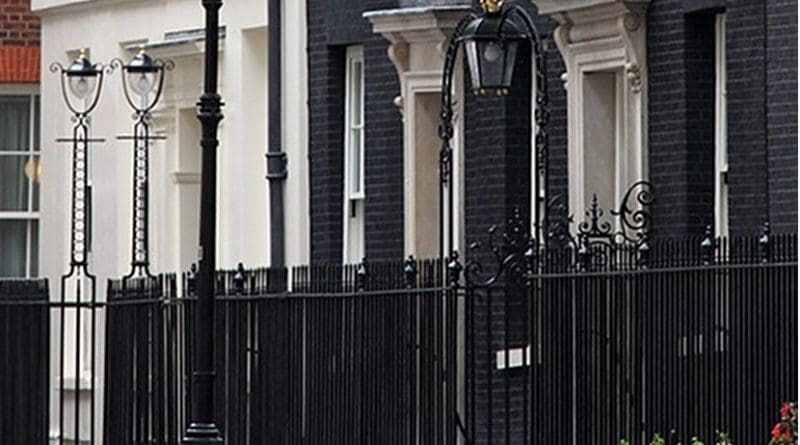In Search Of Realism: The Tory Leadership And Brexit
By EurActiv
By Benjamin Fox
The race to succeed Theresa May as the UK’s prime minister will be appropriately chaotic, light years from the coronation that saw her replace David Cameron in June 2016.
The race will not be officially launched until May officially stands down as leader of the Conservative party next week. But the field of candidates – it has already reached thirteen and may yet get larger – is emblematic of a ruinously divided party.
What does the race mean for the UK’s tortured relations with the EU?
Tory leadership contests typically take several months, and that will leave the new PM precious little time before the Brexit date of October 31.
The 310 Tory MPs will whittle down the field to the final two, who will then take their campaign directly to the roughly 150,000 Conservative party members. Some of the candidates will struggle to get more than a handful of votes.
Giving the final vote to party members – who are far more Eurosceptic than their MPs – makes it almost inevitable that the next leader will be a Brexiteer. Those in Brussels who think relations with the UK cannot get any worse are likely to be disappointed.
May’s deal looks dead in the water. All the frontrunners, and most of the rest, will demand the re-opening of large parts of the Withdrawal Agreement that was so painfully negotiated with EU leaders.
One of the main criticisms of May’s handling of the Brexit negotiations from her party was that she repeatedly said that ‘no deal is better than a bad deal’, but then effectively took the option off the table by insisting on obtaining extensions in order to get her Withdrawal Agreement another chance to get over the line.
Most candidates now say they back a No Deal if the EU refuses to budge.
Candidates back no deal
Of the candidates with the most endorsements from MPs thus far – Boris Johnson, Foreign Minister Jeremy Hunt, Environment Minister Michael Gove, and Dominic Raab – only Hunt backed Remain in 2016.
He now says that he would back a ‘no deal’ scenario, albeit ‘with a heavy heart’, because the “democratic risk of not delivering Brexit is higher than the economic risk of No Deal.”
The Euroscepticism of the party membership has prompted other candidates such as Home Secretary Sajid Javid and Andrea Leadsom, who are trying to force themselves into the fray, to talk up the prospect of a ‘no deal’.
Development Minister Rory Stewart is the only enthusiastic supporter of Theresa May’s deal, and the strongest opponent of No Deal, but few expect him to make the final ballot.
Ironically, Gove was one of the key figures in the Vote Leave campaign team but is the least amenable to a No Deal Brexit and says that he would request an extension to Article 50 until autumn 2020.
Meanwhile, the positions of Johnson and Dominic Raab, both of whom resigned from May’s government over her negotiating tactics, are near identical: both seek to amend the deal on offer, including replacing the Irish backstop, and prefer a ‘no deal’ Brexit if the EU remains unwavering.
The Irish backstop, under which Northern Ireland would remain in the EU’s single market and the UK in the customs union should a future EU-UK agreement not be agreed during the transition period foreseen, sank the May Withdrawal Agreement and remains the most insoluble problem.
All leading candidates have promised to re-negotiate the backstop and make it time limited.
Health Secretary Matt Hancock, meanwhile, has proposed creating an independent ‘Irish Border Council’ in a bid to avoid a hard border, while Sajid Javid has vowed to “make a grand gesture to Ireland that we would cover all their costs – the upfront costs, the running costs – of a new digitised border.”
Both suggestions were quickly ruled out by Ireland’s Europe Minister Helen McEntee.
Parliament against no deal
But while the candidates publicly compete on Brexit, they seem to have disregarded the fact that the arithmetic in the House of Commons makes a ‘no deal’ almost impossible to deliver. At the same time, only a small portion of the debate so far focused on tax, education and healthcare – the daily bread-and-butter of British politics.
Speaker John Bercow has signalled that a new government cannot take the UK out of the EU without the approval of lawmakers, and the majority against a ‘no deal’ scenario remains unchanged.
In other words, whoever succeeds May faces the prospect of watching the defeat of their Brexit plans in the Commons, followed by a no-confidence vote, or at least the threat of one, and a general election.
Polls since the European elections suggest that the strong performances by Nigel Farage’s Brexit party and the pro-European Liberal Democrats were no flash in the pan, putting the two major parties, the Conservatives and Labour, on between 15% and 25%.
While these surveys could be a temporary blip, they underscore the damage that Brexit has caused to the two traditionally dominant parties and signal that an election would be unlikely to produce a government with a majority to break the deadlock.
Last week’s European elections saw the Brexit party top the poll with 32%, followed by the Lib Dems on 20%, as UK voters rewarded parties that have taken a clear stance on Brexit.
ConservativeHome, the website for Tory party members, says that “all signposts point towards a general election”. But none of the candidates dare admit that. An election would put many of their parliamentary colleagues – whose votes they are seeking – out of a job.

